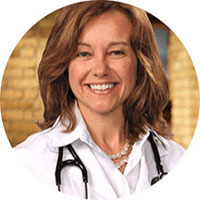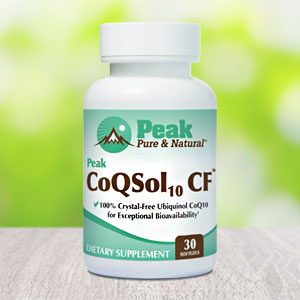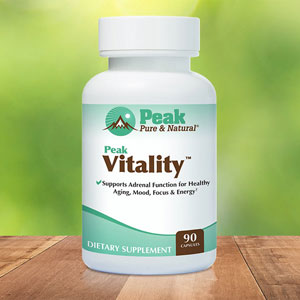Get Easy Health Digest™ in your inbox and don’t miss a thing when you subscribe today. Plus, get the free bonus report, Mother Nature’s Tips, Tricks and Remedies for Cholesterol, Blood Pressure & Blood Sugar as my way of saying welcome to the community!
What is borderline cholesterol, and what should I do about it?

The risks of high cholesterol are clear: The condition increases your chances of having a heart attack or stroke.
But what if your doctor tells you that your cholesterol is “borderline high”? Can you just simply “watch” your readings?
First a bit of background: The CDC defines high cholesterol as a total cholesterol of 240 mg/dL or higher. Normal total cholesterol is defined as a number under 200 mg/dL. “Borderline” readings fall between 200 and 239 milligrams per deciliter.
If you’ve been told your total cholesterol is “borderline high,” you’re not alone. Turns out, borderline high cholesterol is a common scenario, with about 85 million Americans clocking in between 200 and 239 mg/dL.
If you don’t know what your cholesterol levels are, you can ask for a blood test at your next primary care appointment. If you haven’t had one for a while, rechecking it is a good idea…
All about cholesterol readings
As a reasonable rule of thumb, you should have your cholesterol checked once in childhood, twice in your twenties, three times in your thirties, four times in your forties, at least five times in your 50s and yearly thereafter, assuming your cholesterol numbers are acceptable. If at any point they’re elevated or “borderline,” more frequent checks may be necessary.
Coming back to borderline readings: If your total cholesterol level falls between 200 and 239 mg/dL, here’s one important fact you need to know: The number that defines whether a cholesterol reading qualifies as “borderline elevated” or “high” is somewhat arbitrary. There’s nothing magical about the number 239 mg/dL that makes it radically different from 240 mg/dL. Cholesterol numbers fall on a continuum.
So it’s not a matter of absolutely needing to go on medications at 240 mg/dL and being in the clear at 239 mg/dL. It’s far more nuanced than that…
And this is where considering the fuller picture becomes important. For example:
- Do you have other risk factors for heart disease, such as high blood pressure, elevated blood sugar levels or smoking?
- Is there a strong family history of heart disease?
The more non-cholesterol risk factors you have, the more significant ANY number over 200 mg/dL becomes.
Simply “watching” your cholesterol numbers is therefore an unwise strategy as elevated cholesterol readings, whether watched or not, only add to your already elevated risk profile.
Next, look at your cholesterol test results a little more closely. The total cholesterol number is just that — a TOTAL. This means it is made up of components, specifically good (HDL) cholesterol, bad (LDL) cholesterol and triglycerides (TG, mostly fatty particles). This means you can have various combinations of the three components and end up with the same total cholesterol reading.
The formula for how these values relate to each other is as follows: Total cholesterol = LDL + HDL + TG/5
Look at the big picture and relax
So if your total cholesterol is elevated, is it the HDL or LDL cholesterol that’s driving it?
If HDL is high while LDL is low (LDL falling at or below 100 mg/dL would be ideal) — and you don’t have other heart disease risk factors (or very high TGs) — relax: Even though your total cholesterol is elevated, it does not represent a significant risk factor for developing heart disease.
Now, if it’s the LDL that’s high (regardless of HDL results), the scenario is different, and you need to really pay attention and try to get this number lower. The good news is that most people can see meaningful LDL reductions with a few simple lifestyle changes, thus avoiding the need for medications.
This list won’t come as any surprise to regular readers: If you smoke, quit. Get regular exercise. And eat a whole food, plant-based diet. Step One Foods makes it easier to eat this way. In fact, our products are clinically proven to lower LDL cholesterol. They’re a great place to start if your cholesterol levels are abnormal but you’re not already following a full-on plant-based Mediterranean diet or if you find the idea of comprehensive dietary change a bit overwhelming.
If your cholesterol is in that murky middle range, your doctor may also advise you to get a coronary artery calcium scan, which is an imaging test of your heart that can determine how much plaque may have built up in your arteries. (If you’re unsure about getting this scan, here’s everything you need to know.)
In my own practice, I use this test quite frequently because it’s a great way to segment out people at very low risk of heart events that can safely defer going on medications.
Sometimes people have abnormal/borderline cholesterol readings that will not budge despite their best lifestyle efforts. If that’s you, please don’t despair! There’s so much more to heart disease risk — and to health maintenance in general — that goes far beyond a cholesterol result!
Please know that if you’re living in a way that should help lower cholesterol (even if it doesn’t), you’re also living in a way that helps lower blood pressure, improve blood sugar control, prevent cancer and reduce your chances of developing dementia.
Regardless of whether your cholesterol levels are high, borderline or perfect, doing your best around lifestyle is NEVER a wasted effort.
Editor’s note: There are perfectly safe and natural ways to decrease your risk of blood clots including the 25-cent vitamin, the nutrient that acts as a natural blood thinner and the powerful herb that helps clear plaque. To discover these and other secrets of long-lived hearts, click here for Hushed Up Natural Heart Cures and Common Misconceptions of Popular Heart Treatments!














